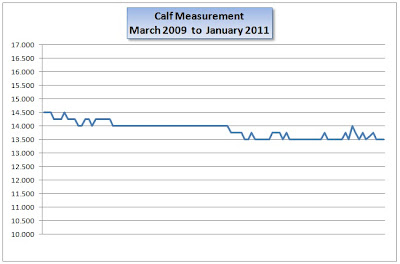A recent blog post from Mark Sisson:
Before I begin, I want to make something clear: this is not your standard
definitive guide to whatever. I’d like to be able to issue a proclamation regarding diet soda that stands the test of time immemorial, but I cannot. Research is still in its infancy, and exactly what diet soda does to those who drink it – if anything – is incredibly confusing. The one thing I can say with any certainty is that, while it’s unfair to say it will kill you or give your unborn child prenatal tumors or make you impossibly obese, you’re probably better off without diet soda. It tastes weird, the list of unpronounceable ingredients is too long for my comfort level, and I’ve seen one too many unsuccessful dieters that seem to live on the stuff.
There are two things to consider when making any conclusions about diet soda’s place in a
healthy diet. Do the ingredients used in diet soda pose a threat to your short-term or long-term (or that of your offspring’s) health? Is it a kind of sugary methadone, impeding healthy eating by making it harder to kick the desire for sweet things in your mouth because, well, you’re constantly putting things in your mouth that mimic sugar? Let’s dig in.
First, the ingredients. What goes into a can of your average diet soda?
Carbonated water, some sort of food coloring, and preservatives like potassium benzoate are all innocuous enough. Nothing to worry about there. You won’t see
Mercola issuing dire warnings about Caramel Color No. 76 anytime soon.
It’s the other stuff that interests (or worries) us: artificial sweeteners and (to a lesser extent) phosphoric acid. Let’s take a look at the two major
sweeteners in popular use, aspartame and sucralose. Are they dangerous?
Aspartame gets a bad rap. High dose rat studies implicate it as a carcinogen, but in exceedingly large amounts. A can of diet soda a day probably won’t give you cancer. Would I avoid it as a
pregnant mother? Yes. Would I be wary of drinking several cans a day? Yes. The basic takeaway is that while the clinical evidence of immediate danger upon normal ingestion of aspartame is lacking, inconclusive, or unclear, the vast amount of
anecdotal evidence from people linking aspartame to
headaches,
migraines, panic attacks, and other maladies gives me great pause.
I mean, the stuff tastes horrible, and that’s enough for me, but some people appear to have real health issues with aspartame. Not everyone, obviously, but some do. If aspartame appears to give you trouble, don’t let
PubMed convince you that it’s harmless. It may very well be safe in the amounts we typically consume in the majority of people, but you can’t ignore your own experiences.
Also known as Splenda, sucralose is a popular sweetener that’s often called “natural” because it’s the product of selective sucrose chlorination. It’s 3.3 times sweeter than aspartame and 600 times sweeter than
sucrose. It seems to have less of a disgusting aftertaste than aspartame (it’s all foul to me, though). Like aspartame, most of the studies reporting negative effects used insanely high doses of sucralose. I’m talking doses in the area of thousands of
Splenda packets a day for months on end. I’m no fan, but I don’t think normal consumption of the stuff will kill you. There was a
study that found normal doses (between 1.1 and 11.1 mg/kg per day; recommended maximum daily dosage is 5 mg/kg) of sucralose negatively impacted the
gut flora in rats and lead to weight gain, although a
later review called the study’s results into question. I’ll pass, but thanks, expert panel. There’s also the fact that sucralose is usually combined with something called acesulfame-K (potassium), another sweetener that many researchers think needs more
toxicity tests. My take? Studies showing negative effects may be overstated or misguided, but why take the risk for that weird chemical aftertaste? Just avoid the stuff to be on the safe side.
And then there’s phosphoric acid. Here’s how the story supposedly goes: phosphoric acid, which soda makers use in place of pricier citric acid, leaches
calcium from your bones and reduces
bone mineral density. Is it true? Well, it’s become pretty clear that foods containing dietary phosphorus – like
meat,
dairy, and other “evil” foods –
strengthen bones, rather than leach from them. But phosphorus isn’t exactly the same as
phosphoric acid, which epidemiological studies have connected with loss of bone mineral density and
osteoporosis. One in particular
found that only colas (both diet and regular) were strongly associated with loss of bone mineral density. What do colas have that other diet sodas largely do not? Caffeine plus phosphoric acid. A
more recent controlled trial found that only fizzy drinks containing caffeine resulted in increased calcium excretion; phosphoric acid content exerted no effect, either alone or in concert with caffeine. I don’t think we can implicate phosphoric acid just yet.
Okay, but remember: we’ve got to be careful when analyzing a food’s worth by singling out one of its constituent parts for good or for bad (although diet soda is by all definitions not food, it is a consumable whose stated purpose is to help dieters lose weight by avoiding sugar). Let’s judge diet soda on that. It may be technically safe to consume, but does it do its “job”? Does it help us lose weight by replacing our sugar intake with non-caloric sweetener intake and
reducing cravings?
By most accounts, no. If you look at the literature,
diet soda has repeatedly been shown to correlate with weight gain and increased incidence of metabolic syndrome:
One study found evidence of a linear dose-response; the more diet soda people drank, the more likely they were to be overweight or obese. As Sharon Fowler, the author of the study, puts it, “for each diet soft drink our participants drank per day, they were 65 percent more likely to become overweight during the next seven to eight years, and 41 percent more likely to become obese.”
Another study, which
I covered a couple years ago, analyzed the diets of more than 9,500 men and women between the ages of 45 and 64 and found that drinking
diet soda was associated with a 34% higher risk of developing metabolic syndrome – the perfect storm of high triglycerides, belly fat, insulin resistance, and obesity that’s so popular nowadays. This was an even stronger association than the one between the “high-meat, high-fat” Western diet and metabolic syndrome.
Authors of both studies speculate that
diet soda drinking just extends the life of sugar cravings, rather than eliminating it. In this scenario, diet soda doesn’t regulate the desire for sugar; it increases it, and diet soda drinkers are simply replacing those empty calories with real sugar. This makes sense, and I think it’s part of it, but a couple other studies suggest that something else is going on entirely independent of caloric intake:
The dietary habits and weights of a homogenous group of middle aged women
were tracked for a year.
Regardless of initial weight status and inexplicable by “food consumption patterns,” users of diet soda were more likely than nonusers to gain weight. They didn’t eat markedly different from non-soda drinkers and yet they got fatter. It continues…
A
more recent study broke rats up into two groups. The first received ad libitum oral doses of water sweetened with the maximum Acceptable Daily Intake (ADI) of saccharin, aspartame, cyclamate, and acesulfame-K (the same formulae used in commercial sweeteners), while the second group received plain water. Both were given ad libitum access to standard rat chow (which usually resembles the SAD: a disgusting mix of
vegetable oils and sucrose). While caloric intake did not change between groups, the
rats given non-caloric sweeteners experienced greater increases in bodyweight. The rats apparently weren’t driven to eat more because of confused
satiety signals, and yet they still gained more weight. What gives?
Are diet soda drinkers eating more actual sweets to make up for the missing calories? Are their satiety signal hormones being altered by some chemical additive? Or is something in the diet soda actually causing weight gain independent of caloric intake?
We simply don’t know. We do know, however, that our bodies respond to everything they encounter. You
lift a weight, you send a message to your body (build more muscle, make bones denser, establish neural pathways for movement!). You put food in your mouth, that elicits a response, even before the food hits your
gut, as with the
carbohydrate mouth rinse that increases
athletic performance. It may be that introducing artificial sweeteners directly to your gut (bypassing the tongue)
doesn’t affect subjective satiety or satiety hormones, but that’s not how we drink diet sodas. We taste them. With our tongues. And there is a decent amount of (mixed) evidence that certain artificial sweeteners in certain situations in certain individuals can actually elicit hormonal responses from taste alone, leading to hunger that isn’t really there and perhaps even insulin to handle dietary glucose that was never actually eaten. The details of any effect artificial sweeteners have on our hunger hormones are still being teased out, and the subject demands a dedicated post sometime in the future – so stay tuned for that.
In the end, diet sodas contain potentially harmful chemical additives and phosphoric acid that may or may not leach minerals. The majority of people who drink them to lose weight are unsuccessful, and most epidemiological evidence and some clinical evidence has linked diet soda intake to increased obesity, even irrespective of caloric intake. It may be that tasting sweet stuff without a corresponding caloric dose is throwing off our satiety signals and messing with our normal hormonal response to food, or perhaps relying on fake sugar just makes it harder to give up the real stuff.
Of course, whether they have a place in your diet is up to you. Maybe you’ll buck the trend and lose more weight and experience greater relief from sugar cravings with diet soda. Maybe you have one every few days and no more. If you’re a dedicated diet soda addict, maybe
experiment with slowly eliminating it from your diet. Drink a bit less than usual and see how you feel. Try to save your
80/20 allowance for something a bit more fun, like maybe a high quality full-fat ice cream or a
hunk of super dark chocolate (which actually has some nutritional merit, like
good dairy fat). I’m gonna say that
ideally you ditch them altogether, mostly because they seem to reinforce bad habits in most people and because the long term effects aren’t fully known.
Whatever you do, don’t start a diet soda habit after reading this post!




































